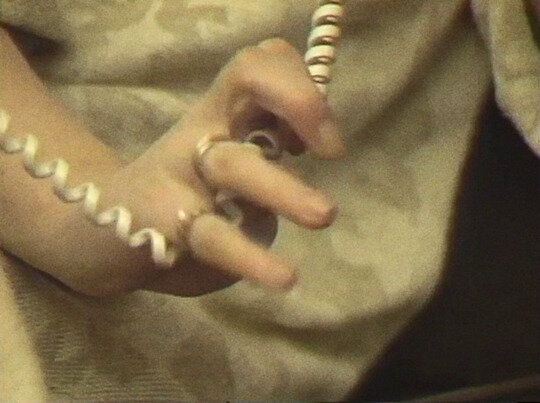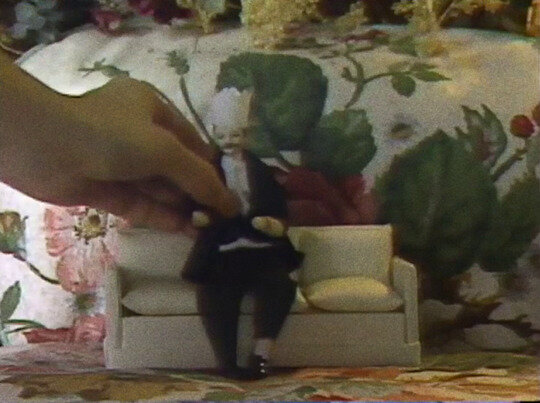Filming the Feminine with Cecelia Condit
Video artist and storyteller Cecelia Condit saw her modern renaissance begin in 2015 when a YouTube excerpt from her horror/musical Possibly in Michigan started to crop up in various subreddits. r/Creepy and r/NotTimAndEric began circulating Condit’s film, which led to its feature in a handful of YouTube compilations. From this, 17-year-old TikTok user @vrisrezi became exposed to Condit and uploaded some audio from Possibly in Michigan onto the app. After this, the audio was widely used on the platform, especially in sub-communities of surreal makeup and costume play. By 2019, the #PossiblyInMichigan hashtag on TikTok had garnered over 12 million views, and the video’s YouTube upload had over 750,000 views. In an interview with the New York Times, Condit said; “It’s funny, I don’t have a gallery, I don’t have those things, but the internet has been… I get so many hits”. Indeed, contemporary internet culture - as shaped by TikTok and the rise of amateur filmmaking - became the perfect host for the resurrection of Condit's low-budget, highly inventive archive of films.
Condit’s films give credence to the whimsy, made possible through the video art medium. Characterised by overspilling visuals and haptic camerawork - and occupying a permanent position in the MoMA - Condit’s best-known short Possibly in Michigan is a sensorial fairytale of two women as they wander through a shopping mall, testing perfumes and cosmetics, before noticing the villainously pantomimic Arthur who stalks them. Though deceptively simple in its premise, Condit embellishes the macabre of Possibly in Michigan with a kaleidoscopic aesthetic (verging on camp) to wax lyrical on women’s experiences of trauma and survival. This impulse, to thread together horror and splendor, forms the skeleton of Condit’s artistic sensibility.
Possibly in Michigan, Cecelia Condit. 1983.
In all of Condit’s films, American spaces become playgrounds of creative potential; characters are seen sedately wandering through malls, backyards, and suburban homes. And yet, despite the ubiquity of these settings, Condit somehow manages to alienate audiences through obscuring identification. She primes the mundane as uncanny, she obscures the hazy tranquility of suburbia into something unrecognisable. Condit’s 1996 Suburbs of Eden, an allegorical portrait of suburban femininity, attests to this. While Suburbs of Eden demonstrates a sense of ennui one would expect at the turn of the century, Condit captures a bleakness seldom seen among her more popular contemporaries - all pale in comparison with Condit’s films, (to situate her video art among mainstream feature films at all feels like a betrayal of Condit’s experimentalism). Indeed, Condit’s artistry stands for everything at odds with the glossy actorliness of thematically similar films such as Sam Mendes’ high-budget feature film American Beauty, and it is precisely its ‘home-movie’ quality, as emphasised through the short film medium, that reveals Condit’s tactility as a director.
Blanketed in anonymity and tinged with realness, (the unknown actors seem like individuals Condit has chanced upon while filming), Condit's shorts feel more like art installations than films. Condit occupies positions up close to the subjects of her fascination, literally so in All About a Girl with its estranging close-ups, and in Some Dark Place with its observations on photographs and memorabilia, and more figuratively through a consistently multi-textural aesthetic that spans her filmography. Herein lies the distinction between Condit as a video artist, and more cinematically-driven creators. Condit is reluctant to apply chronology and plot to her craft, at least in a conventional sense, instead she envisions the world-proper as a succession of images; as a bombardment of the senses, often to the score of gossipy or musical narration. Though this avant-gardism long kept her work from the mainstream, the same experimentalism that positioned Condit as an artistic outsider, surmised her freedom to explore grittier, more personal terrain. (See the backstory for Condit’s first film, Beneath the Skin, at your own risk).
At home in Condit’s interest towards quotidian spaces, the childish intuition to over-turn a garden rock seems a rather suitable analogy for her approach as a filmmaker: to defy the instinct of shying away from horror, to embrace the unknown with tentative curiosity. With Possibly in Michigan as her apotheosis, and her more self-reflective works at the peripheries, Condit welcomes the possibilities of video artistry, tempting us to look beneath the rock alongside her.



Sources
Possibly in Michigan
https://www.youtube.com/watch?v=iLJNSD3H5sg
All About a Girl
https://www.youtube.com/watch?v=kWI16hYaFAA
Some Dark Place
https://www.youtube.com/watch?v=b9V0wEUi_gk
Suburbs of Eden
https://www.youtube.com/watch?v=YMjiJEMUok8&t=239s
How This 71-Year-Old Video Art Pioneer Became a TikTok Star
https://www.nytimes.com/2019/11/06/t-magazine/possibly-in-michigan-tiktok-artist.html

